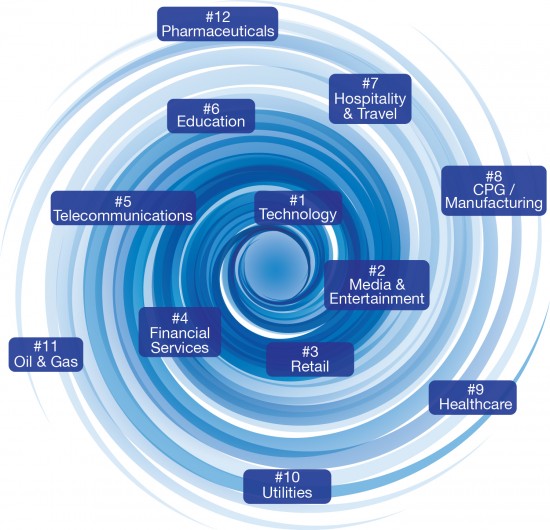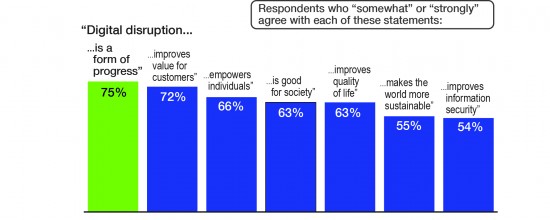I have good news and bad news. First, the bad news: across industries, digital disruption is threatening to overturn incumbents and reshape markets faster than perhaps any force in history. Now the good news: companies can take control of their own destiny by embracing digital transformation and the Internet of Everything (IoE).
Let’s take a closer look. By “digital disruption,” I’m referring to the effect of digital technologies and business models on a company’s current value proposition — and its resulting market position. Digital disruptors innovate rapidly, and then use their innovations as a powerful competitive advantage to gain market share and scale far faster than challengers still clinging to traditional business models that can’t keep up with the pace of change.
Given that a single app or startup with 10 employees can literally disrupt an entire industry, digital disruption is a main focus of the newly formed Global Center for Digital Business Transformation (DBT Center), a joint initiative of Cisco and the International Institute for Management Development (IMD). The DBT Center recently released a comprehensive study that reveals the findings and insights from a survey of 941 global business leaders regarding the current state of digital disruption — and the outlook for industries.
The study compares the impact of digital disruption to the relentless, often chaotic motion of a vortex, which exerts a rotational force that draws everything that surrounds it into its center.
The “Digital Vortex” symbolizes the inevitable movement of industries toward a “digital center” in which business models, offerings, and value chains are digitized to the maximum extent possible. The force of this “vortex” separates physical and digital sources, creating “components” that can be readily combined to create new disruptions, and blurring the lines between industries.
Just like a black hole or tornado, the Digital Vortex is extremely powerful. According to the DBT Center study, the Digital Vortex will displace an average of 4 in 10 top incumbents by industry within the next five years.
The DBT study ranked the state of digital disruption for 12 different industries. An industry’s position relative to the center of the Digital Vortex reflects the state of competition a firm in that industry will face, rather than its own digital capabilities per se. The study ranked Technology, Media & Entertainment, and Retail as the three industries that will see the greatest potential competitive disruption within five years as a result of digital technologies and business models.
Positioning Industries in the Digital Vortex

It’s important to understand, however, that placement near the center of the Digital Vortex does not imply “going down the drain.” Far from it. While movement of industries toward the center of the Digital Vortex is inevitable, firms within those industries can control their destinies by embracing digitization and utilizing IoE as the way to transform.
With this “glass-half-full” view, the Digital Vortex becomes an incredible opportunity.
After all, more than any other factors, the Digital Vortex is powered by human ingenuity and a pervasive desire to make life better. Perhaps this is why executives in the DBT Center survey primarily viewed the effects of digital disruption as being positive: 75 percent said digital disruption is a form of progress—that it is moving us in the right direction; nearly as many say the customer ultimately benefits; and two-thirds believe the individual is empowered—not merely as a consumer, but as a human being.
Digital Disruption: the “Good”

To thrive in the Digital Vortex, firms must place a premium on greater foresight, experimentation, and fast execution, particularly as an industry moves toward the center. In this environment, winners will be agile organizations that utilize the people, process, data, and things approach of IoE to innovate rapidly and unbridle their capacity to create cost value, experience value, or platform value for their customers. Who do you think the winners will be?
CONNECT WITH US